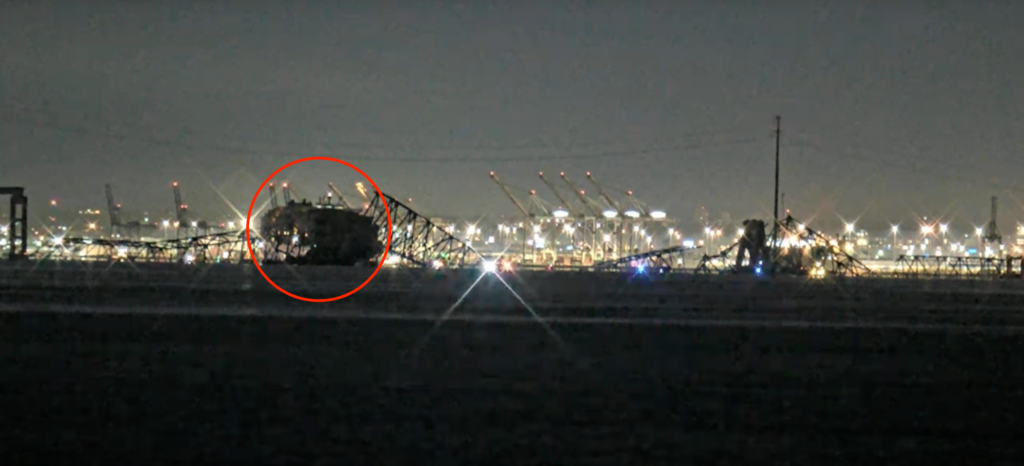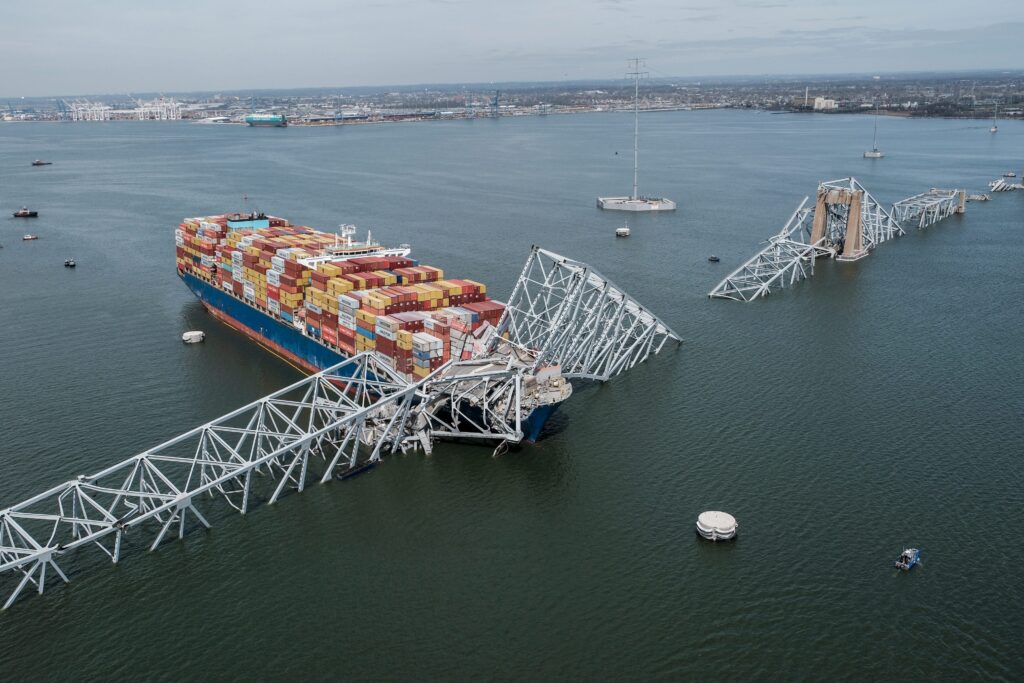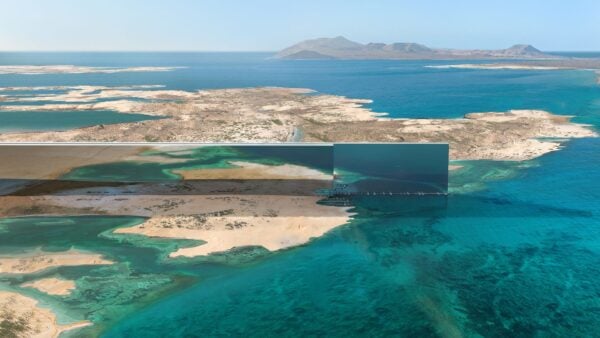- The Dali called out for help from tugboats minutes before it crashed into the Key Bridge, authorities said.
- Data from the ship's Voyage Data Recorder revealed alarms, steering commands, and rudder orders before the crash.
- However, all attempts to halt the ship were ineffective.
Minutes before the container ship Dali collided with the Francis Scott Key Bridge in Baltimore, it radioed for help from nearby tugboats, authorities said Wednesday.
The National Transportation Safety Board said that it had retrieved around six hours of data from the ship's Voyage Data Recorder, or VDR, a device similar to an airplane's black box recorder.
The NTSB released its preliminary observations from the VDR, in the aftermath of Tuesday's disaster that saw the destruction of the bridge as well as the presumed deaths of at least six people.
Marcel Muise, the safety board investigator, described the contents of the VDR in the minutes before the ship collided with the bridge.
He said that the ship was recorded leaving Seagirt Marine Terminal at 12.39 a.m. local time.
Around 45 minutes later the ship had entered the channel, he said, traveling at a land speed of around 9.2 miles per hour.
"At 01.24 and 59 seconds, numerous audible alarms were recorded on the ship's bridge audio," Muise added.
The VDR stopped recording data for about a minute at this point, though audio recordings continued on a secondary power source, he said.
Steering commands and rudder orders could be heard, he added, and "at around 01.26 and 39 seconds, the ship's pilot made a general VHF radio call for tugs in the vicinity to assist."
"That's the indication of the first sign of needing help," NTSB Chair Jennifer Homendy said.
It's unclear how the tugs responded.
Around this time a call was also made to the Maryland Transportation Authority regarding a blackout, Muise said.
The pilot ordered the ship to drop anchor, and also gave steering commands, but by 1.27 a.m. the pilot radioed to report that "the Dali had lost all power and was approaching the bridge," Muise said.
That's when the MTDA issued an order to close all traffic lanes on the bridge, he added — a move that Maryland Gov. Wes Moore said saved lives.
By 1.29 a.m., the Dali was traveling at a land speed of eight miles per hour, Muise said.
Then, he said, "the VDR audio recorded sounds consistent with the collision of the bridge."
This is also the moment that the lights on the bridge can be seen flickering out in video footage from the scene, he added.

The NTSB now plans to gather technical experts to review the entire recording and to make a transcript of all dialog and alarms, Muise said.
The VDR gathers audio from the ship's bridge, its radio, and sensor data like the ship's speed, heading, rudder angle, as well as some alarm information, Muise said.
A VDR is required to record 30 days of data, Homendy said.










